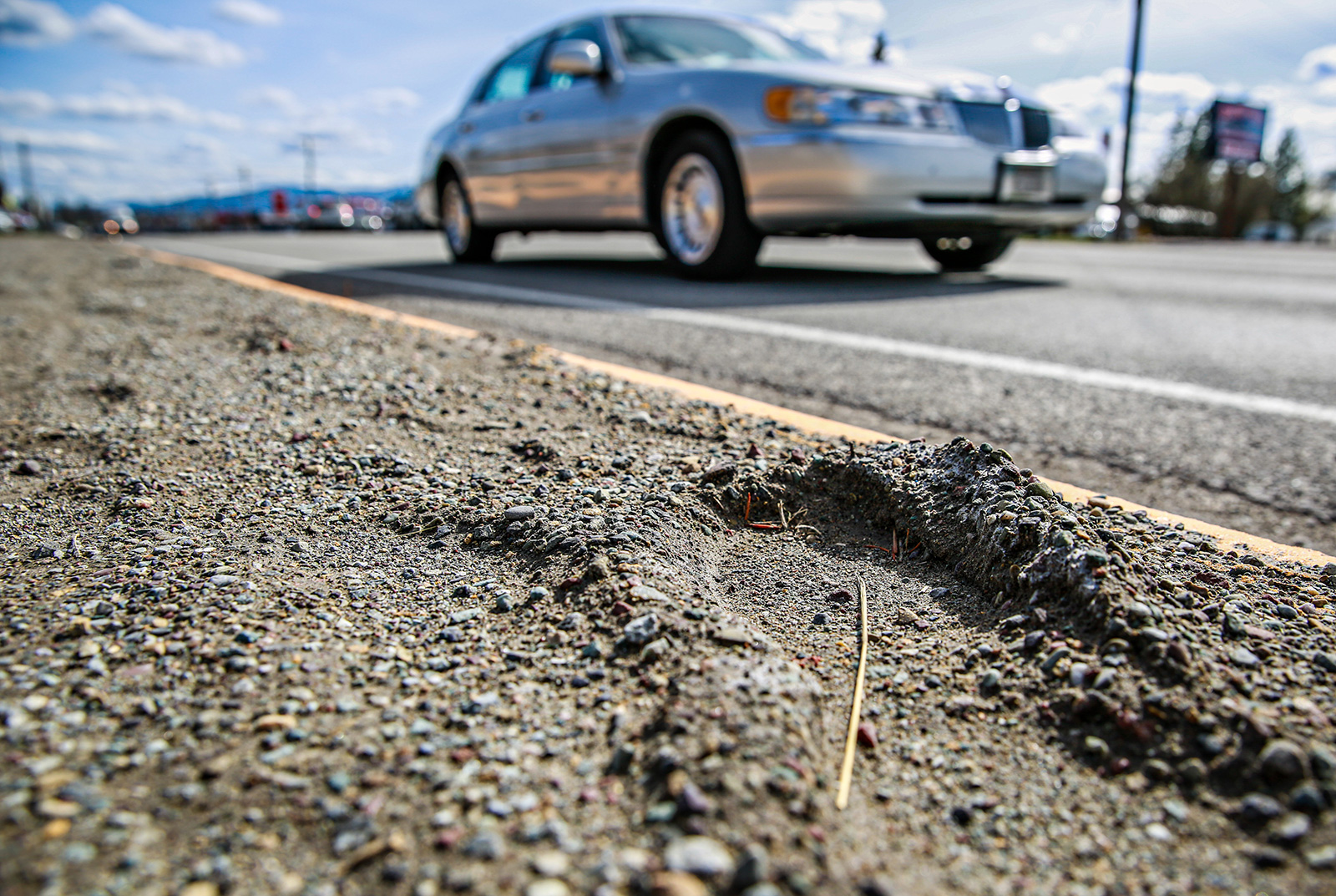Evergreen Community Partners Seeks Grant for Sidewalks
Safe Routes for Schools project requires county sponsorship to receive a grant to fund construction
By Micah Drew
The Flathead County Commission on April 20 heard a presentation by Evergreen Community Partners (ECP) on the proposed Safe Routes to Schools project to build sidewalks along key walking routes for students in Evergreen.
“We need your help, desperately,” Evergreen Superintendent Laurie Barron said. “As you know, Evergreen is one of the most densely populated school districts in the state of Montana … and because we’re so small geographically, although we’re densely populated, we don’t receive funding form the state of Montana for transportation for students for routes to and from school each day.”
“Our students are car riders (or) they walk or they ride their bicycles each day,” she continued. “You can imagine during poor weather, particularly during the winter when the snow plow is happening, they aren’t any sidewalks coming on the main highway.”
Evergreen Community Partners outlined a collaborative effort between the Montana Department of Transportation, Flathead County, the Evergreen Chamber of Commerce and local property owners to come together and address the problem.
Charles Lapp, an Evergreen real estate agency owner and ECP board member, told the commissioners that this was not a novel project idea — a similar partnership more than a decade ago led to the construction of the bike path between East Evergreen Elementary and Evergreen Junior High.
“The county commissioners at that time 12 years ago recognized the danger that was on East Evergreen Drive and I would submit that the danger that is on Highway 2 is significantly more than that,” Lapp said. “It was done at the urging of the Flathead County commissioners … and I know that none of you were here, but that was serious.”
Lapp and other members of ECP came up with a plan involving a grant from the Department of Transportation and the creation of two special tax districts to cover the construction and maintenance of the proposed sidewalks.
The Safe Routes to Schools project outlines five priority areas that community leaders have identified as needing paved paths. Priorities one and two run south along U.S. Highway 2 from Evergreen Junior High. Priority three runs along Evergreen Drive, priority four involves a stretch of Montana Highway 35 and the final stretch is on Highway 2 north of the Evergreen Drive intersection.
Only priorities one and two will be addressed with the current grant proposal.
The grant requires a local government agency to assume responsibility for maintenance of a sidewalk in order for the Department of Transportation to give up its right-of-way, which is where the county comes into play. The county must submit the grant application by the June 4 deadline in order for the project to be in the running for the funding.
The Montana Department of Transportation has $5.5 million through the federal Transportation Alternatives (TA) Program, with individual awards capped at $1 million, and requires applicants to cover 13.42% of a project.
A probable cost opinion was developed by planning and design firm WGM Group, which puts the project estimate at $985,000 and would require matching funds of approximately $188,000.
Lapps said ECP was working to finalize the formal Rural Special Improvement District (RSID), which could be submitted after the grant application.
“We feel that we can’t wait for next year and take the risk that the TA program may or not fund the program,” Lapps said. “We have the ability to amend that application … and it will be enough to verify signatures and the process that has to be done.”
Commissioner Pamela Holmquist brought up several concerns about submitting an incomplete application.
“We talked about the RSID and you guys have stepped up and you’ve done a great job trying to solve that issue,” she said. “At the end of the day we were hoping to have that issue solved before we apply for the grants because it makes the grant stronger.”
Commissioner Randy Brodehl agreed that the commission was hesitant to move forward “halfway.”
“We have a fiduciary responsibility and responsibility to the community to manage this very well,” Brodehl said. “If we don’t do that, and it’s because we didn’t do everything up front, then we’ve been remiss.”
On April 30, Commissioner Brad Abell said the commissioners were actively working toward pulling together the grant application.
“My goal as a commissioner is to get this in place,” Abell said. “But I want the maintenance taken care of so we don’t wind up 10 or 15 years down the road with a boondoggle for future commissioners.”